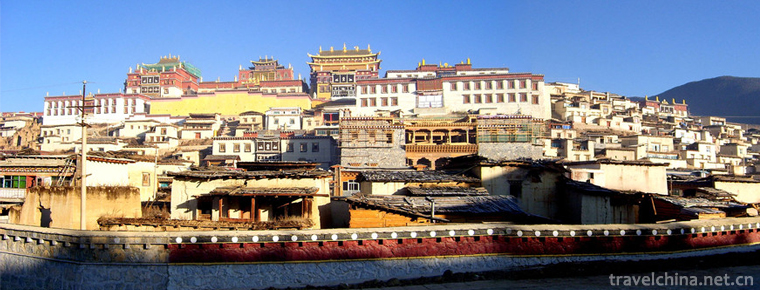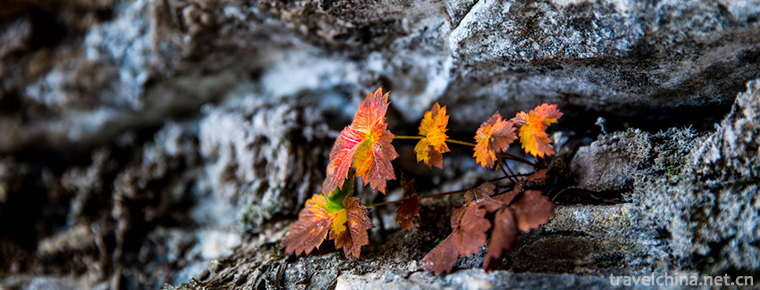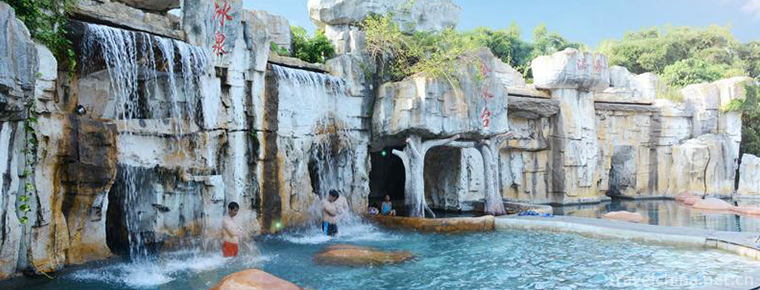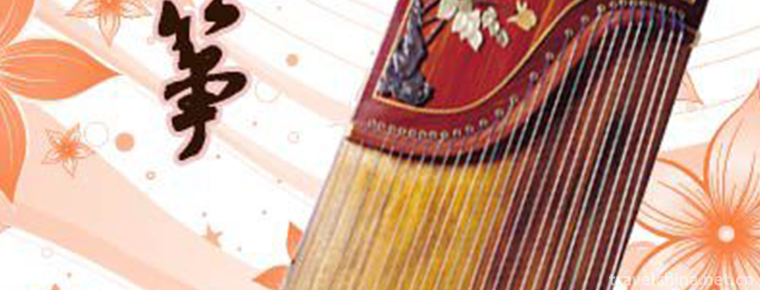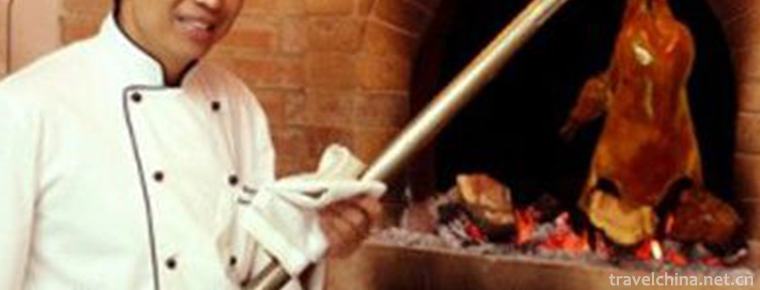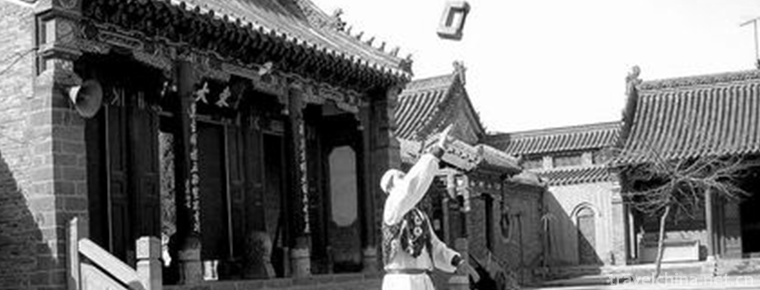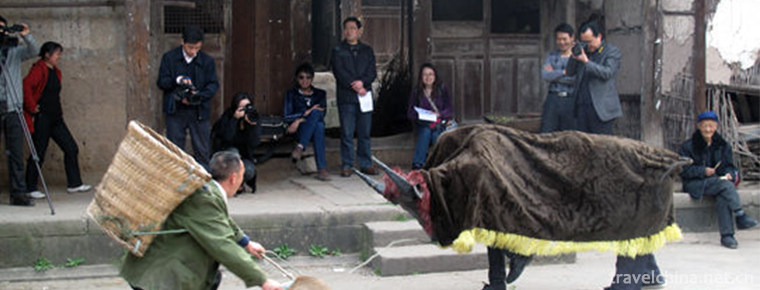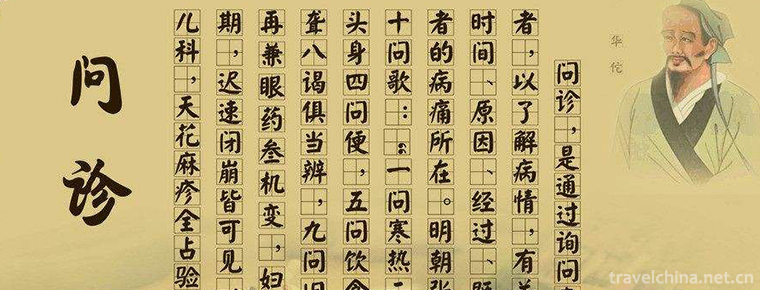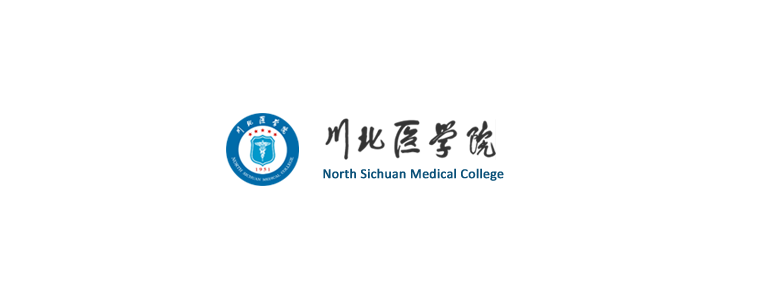Gell
Gell
"Gar", which means singing and dancing in Tibetan, also means "music and dance", because performing Gar has accompaniment of special instruments. On the staff roster of the Tibetan local government, it is called "Dianzhen Garry", which is for music and dance in the clouds. Gaal mainly appeared in large-scale celebrations and occasions such as welcoming the Dalai Lama and Panchen Masters, and other occasions can not be performed at will.
On June 7, 2008, "Gar" declared by the Tibet Autonomous Region was listed in the second batch of national intangible cultural heritage list with the approval of the State Council. Number 682 III-85.
historical origin
Tibetan "Garqiang Mother" means performing dances. Some people used to call Garqiang Mother "the God dancing of religion", "the law dance of religion", "the religious Qiang Mother" and so on, but there are two basic different traditional appellations for this art in various religious schools of Tibetan Buddhism, one is "Garqiang Mother" by other sects except the Gelug sect, and the other is "Sangwei Duoji Garqiang Mother" by the Gelug sect, which means "performing the Vajra Dance of Mizong". Because of their historical origins and the different instrumental music accompanied by their performances, they are called "Aqiang Mother" and "Tongqiang Mother" respectively. The performances of "Aqiang Mother" mainly consist of various drums and cymbals as the main musical instruments, while the performances of "Tongqiang Mother" consist of various brass wind instruments as the main musical instruments. In addition, the historical origin of "Aqiang Mother" was earlier than "Tongqiang Mother". According to legend, in the eighth century AD, Master Lotus and Peanut repressed the enemy of Buddhism, such as Zanab, and achieved this goal by using folk God dance at that time and combining Buddhist sect magic. Since then, when Tibetan Buddhist factions held this activity, there was a statue of the devil called "Lingka" in the tree, and the lamas of Sangye Temple called him "Ruzanab". Whether they are "mother of Aqiang" or "mother of Tongqiang", the basic content they represent is that all kinds of guardian gods suppress the devil.
artistic characteristics
Suitable occasion
Balang encourages people to perform on the fifth to fifteenth day of the first lunar month during the Spring Festival. From the sixteenth day of the first lunar month, the Balang drum will be offered high for use in the coming year. Zhuoni Tibetan calls Balang drum "Shamu". Its place of activity is called "Shamu Stadium", and the day of performing Balang's inspiration during the first month is called "Manla Festival". At that time, each village will be composed of men, young and old, "Sham Team". In addition to dancing and singing in their own village, they will also go to neighboring villages to catch up with the "Manla Festival" for communication. The loud drums and vigorous dancing add endless joy to the Spring Festival.
Form of performance
Before the performance began, a campfire was set up in the center of the "Sha Mu Chang", where tables, chairs and benches were placed for the elderly, who were in charge of the activities. Young people pour tea and pour wine. They are busy before and after running. Children are chattering all over the courtyard. It's a festive scene. Towards dusk, the whole village arrived and a deacon announced the beginning of the performance. The "Shamus Team" danced around the campfire, shaking the balang drum. First singing the prelude "Gentle", then dancing "Kusong Gary", three times in a question-and-answer way to greet each other; then dancing while singing "Shalou Meilou", meaning "Sha Mu" text begins. Following are Spring Bud Spring, Spring Column, Nizhi Dao Yang and so on. The lyrics include congratulations on harvest and festivals, praises of natural beauty and good people and good deeds in their hometown, criticisms of current problems, and guessing fancy pan songs. So they sang until the night wore on. The cock announced the dawn. The host was going to invite the "Sha Mu Team" into the most spacious hall, and the families brought out plentiful festival food and barley wine to entertain the guests. At this time, the representative of the host raised his glass and asked "Long Sufficiency", "Samaru" (Dinner Song), and "Zamaru" (Wine Song). The guests immediately answered with the song, singing to each other, and the climax was repeated. During the festival, married young and old girls return to their mothers'homes, gather together with their families and neighbors, dance "Anisan" and sing "Tongka" songs, and celebrate the New Year in high spirits. In the midst of the morning light, the main guests gathered at the "beach yard", held a farewell ceremony, danced "Gailu", and wished each other a good harvest in the coming year. At this point, the "Manla Festival" of a village is over, and the "Team" is actively preparing to go to the next village to celebrate the "Manla Festival". Balang encourages ruggedness and fitness, and has a strong sense of rhythm and strong romantic local ethnic characteristics.
Inheritance significance
Gal has a long history, beautiful dance shape, unique music style, is a unique etiquette of men's comfortable singing and dancing art.

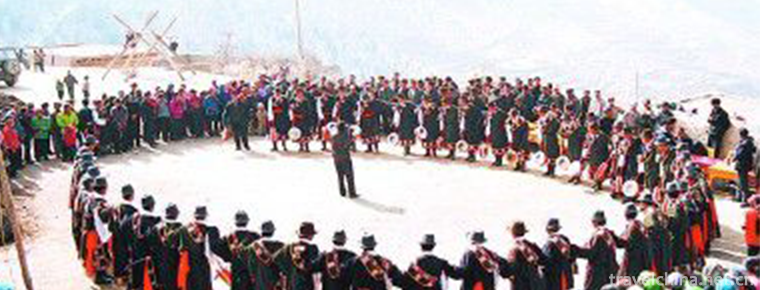
Gell
-
Naturalization TempleSongdan Songzanlin Temple
Kardan Songzanlin Temple is the largest Tibetan Buddhist monastery in Yunnan Province
Views: 166 Time 2018-10-20 -
Baishishan Scenic Area Baoding City Hebei Province
Baishishan Scenic Area, also known as Baishishan National Geological Park, is called "Xiaohuangshan" because its scenery resembles the Huangshan Mountain in Anhui Province.
Views: 296 Time 2018-11-24 -
Jinshuitai Hot Spring Scenic Area
Jinshuitai Hot Spring is a hot spring resort built according to the national AAAA scenic standard. It is located in Shuitai Town, Xinxing County, Guangdong Province
Views: 401 Time 2019-01-27 -
Ewenki reindeer custom
Ewenki reindeer, also known as Ewenki hunters (mainly according to their professional characteristics and different from other Ewenki), are part of the Ewenki people. They migrated over 300 years ago
Views: 179 Time 2019-04-28 -
Guzheng Art
Guzheng is one of the oldest traditional stringed instruments. As early as the Spring and Autumn Period and the Warring States Period, it was prevalent in Shaanxi and Gansu.
Views: 200 Time 2019-05-01 -
Roast duck skills
Quanjude hanging oven roast duck is a local traditional handicraft in Beijing. Quanjude Roast Duck Restaurant, a well-known old Chinese brand in Beijing, was founded in 1864 by Yang Quanren.
Views: 208 Time 2019-05-08 -
Throw stones Lock
Throw stones Lock is an ancient martial arts skill item, which originated in the Tang and Song Dynasties. It has been widely circulated among the Hui people in Kaifeng for a long time. During the Qing
Views: 128 Time 2019-05-13 -
Horse vaulting
Horse vaulting, a traditional sacrificial dance, is popular in Rudong, Jiangsu Province. It is a dance performed in sacrificing the "Dutian King" they believe in. Participants held "hor
Views: 115 Time 2019-06-21 -
Play with cattle
Playing cattle originated from the worship of nature in ancient times. In the era of farming civilization, cattle farming is particularly important for people's production and life. Therefore, through
Views: 350 Time 2019-06-25 -
Diagnosis of Traditional Chinese Medicine
Diagnosis of traditional Chinese medicine, one of the traditional Chinese medicine, is declared by the Chinese Academy of Traditional Chinese Medicine, one of the national intangible cultural heritage
Views: 343 Time 2019-08-10 -
North Sichuan Medical College
North Sichuan Medical College is located in Nanchong City, a famous historical and cultural city in Sichuan Province and the birthplace of Three Kingdoms Culture. The school's predecessor was the Nort
Views: 309 Time 2019-08-31 -
Seven Star Mountain tower
The Seven Star Mountain tower, commonly known as the black tower, was built in the Jiajing period of the Ming Dynasty (1522-1566). It is the brother tower of Dongshan white tower. It is on a peak of Qixing mountain in Taba village, Nanguang Town
Views: 386 Time 2020-10-16
